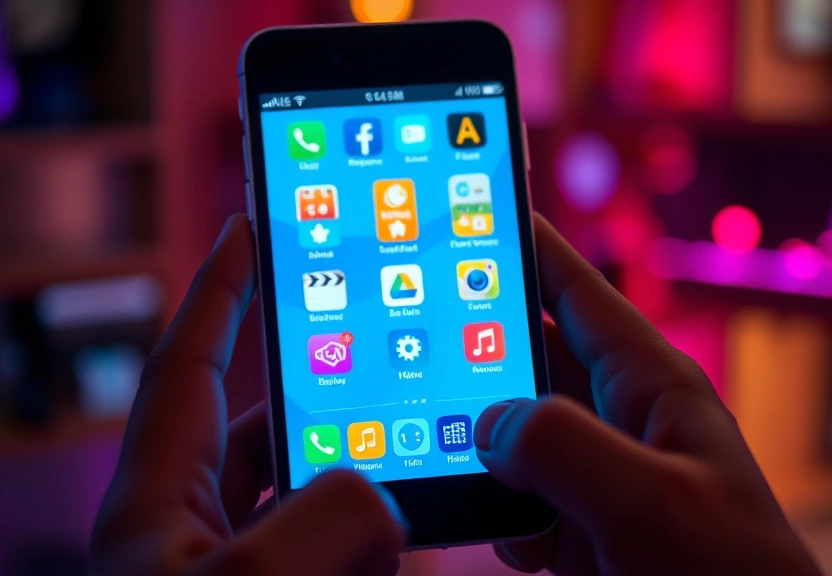5 Game-Changing Gamification Apps for Interactive Learning
Introduction and Context
In today’s fast-paced digital world, traditional learning methods often struggle to engage students and maximize their potential. This is where gamification comes into play, transforming the educational landscape by incorporating game-like elements into learning experiences. Gamification not only enhances engagement but also encourages deeper learning through interactive challenges. In this article, we will explore five innovative gamification apps that are revolutionizing mobile learning apps, making education more interactive and enjoyable for learners of all ages.

Main Development
Gamification apps utilize game mechanics, such as points, badges, and leaderboards, to motivate learners. These elements foster a competitive yet collaborative atmosphere that can lead to improved retention of knowledge. The following five apps stand out in their ability to create engaging and effective learning environments:
1. Kahoot!
Kahoot! is a widely recognized mobile learning app that allows educators to create interactive quizzes and games. Users can participate in these quizzes in real-time, either in a classroom setting or remotely. The app’s vibrant interface and engaging gameplay make learning fun and competitive. Teachers can track student progress and adapt their teaching strategies based on performance data.
2. Quizlet
Quizlet is another powerful gamification app that focuses on study tools. It allows users to create flashcards, quizzes, and various interactive games to reinforce learning. The app’s “Learn” mode adapts to the user’s knowledge level, ensuring that they are challenged without becoming overwhelmed. With millions of user-generated sets, Quizlet offers an extensive library of topics suitable for diverse learning needs.
3. Classcraft
Classcraft takes gamification to another level by turning the classroom into a role-playing game. Students create avatars and work collaboratively to complete quests and earn rewards. This app not only enhances engagement but also promotes teamwork and social skills. Teachers can customize challenges based on their curriculum, making learning personalized and relevant.
4. Duolingo
Duolingo is a leading language-learning app that employs gamification to teach new languages. The app uses bite-sized lessons, quizzes, and rewards to keep learners motivated. Users can earn points, unlock new levels, and compete against friends. The app’s engaging approach makes language learning accessible and enjoyable, encouraging daily practice and interaction.
5. Edmodo
Edmodo is an educational platform that combines social networking with gamification. It allows educators to create a digital classroom where students can share resources, collaborate on projects, and participate in challenges. Teachers can reward students with badges for completing tasks, fostering a sense of accomplishment and community. Edmodo’s collaborative features make it an excellent choice for mobile learning apps focused on group dynamics.
Detailed Analysis
Each of these gamification apps offers unique features that cater to different learning styles and needs. Understanding their functionalities can help educators and learners choose the right tools for their educational journeys.
User Engagement
One of the most significant advantages of gamification apps is their ability to enhance user engagement. By integrating game mechanics, these apps create an immersive experience that draws users in. For example, Kahoot! leverages competition to keep students focused, while Duolingo uses progress tracking to encourage daily use. This level of engagement is crucial for effective learning, especially in mobile learning apps where attention spans may be shorter.
Customization and Flexibility
Another key benefit of gamification apps is their flexibility. Educators can tailor content to meet the needs of their students. Classcraft, for instance, allows teachers to create quests that align with their curriculum, making lessons more relevant. Additionally, apps like Quizlet enable users to create personalized study materials, ensuring that learners can focus on areas where they need the most help.
Collaboration and Social Learning
Many gamification apps promote collaboration among learners, fostering a sense of community. Edmodo excels in this area by providing a platform for students to work together on projects and share resources. This collaborative aspect not only enhances learning but also builds essential social skills that are valuable in both academic and professional settings.

Benefits and Applications
Gamification apps provide numerous benefits for both students and educators. Here are some key advantages:
- Enhanced Motivation: The competitive nature of gamification encourages students to stay motivated and engaged in their learning.
- Improved Retention: Interactive learning experiences lead to better retention of information, as learners are more likely to remember content that they have engaged with actively.
- Immediate Feedback: Many gamification apps offer instant feedback, allowing learners to understand their strengths and weaknesses and adjust their study strategies accordingly.
- Accessibility: Mobile learning apps make education accessible to a broader audience, breaking down geographical and economic barriers.
- Fun Learning Environment: By incorporating game-like elements, these apps create a fun and enjoyable learning atmosphere, encouraging learners to explore new topics.
Frequently Asked Questions
1. What is gamification in education?
Gamification in education refers to the integration of game mechanics into the learning process to enhance engagement, motivation, and retention of knowledge.
2. How can gamification apps improve learning outcomes?
Gamification apps improve learning outcomes by making education interactive and enjoyable, thus increasing motivation and engagement, leading to better retention of information.
3. Are gamification apps suitable for all age groups?
Yes, gamification apps are designed to cater to various age groups and learning levels, making them suitable for children, teenagers, and adults alike.
4. Can gamification apps be used in traditional classrooms?
Absolutely! Many gamification apps can be seamlessly integrated into traditional classroom settings to enhance lessons and engage students.
5. What are some examples of successful gamification in education?
Examples of successful gamification in education include Kahoot! for quizzes, Classcraft for role-playing learning, and Duolingo for language acquisition.
Conclusion
Gamification apps are changing the way we approach education by making learning more interactive, engaging, and effective. The five apps discussed in this article—Kahoot!, Quizlet, Classcraft, Duolingo, and Edmodo—offer unique features that cater to different learning preferences. As mobile learning apps continue to evolve, the potential for gamification in education is limitless. By embracing these innovative tools, educators can create dynamic learning environments that inspire students and foster lifelong learning.




